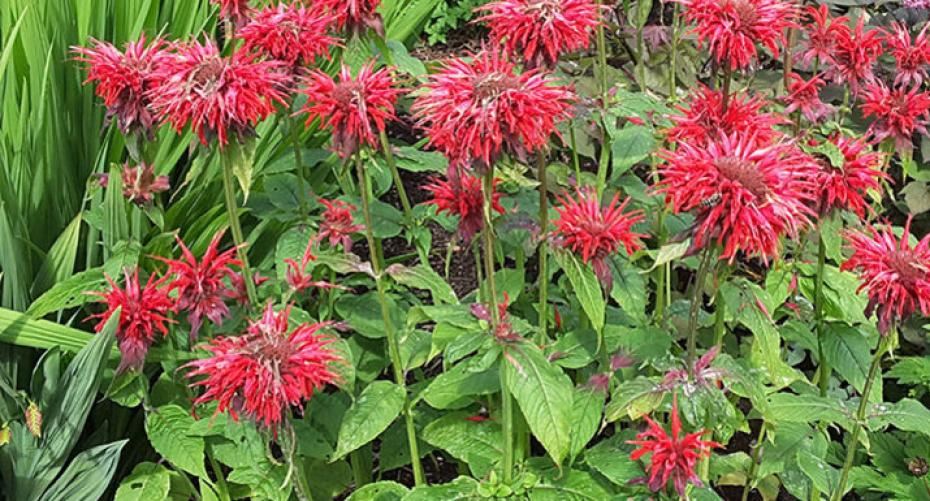Follow these hints and tips to prevent unsightly mildew
Monarda didyma 'Cambridge Scarlet' (pictured above)
Powdery mildew is the scourge of gardeners as it spreads like wildfire and can decimate crops and flowers. Once you have it there is no cure so try and prevent it from happening in the first place. Although it’s not fatal it makes the plants look unsightly and will prevent them from performing at their best. It looks like a greyish white powder on the leaves which you can rub off between finger and thumb; the spores are borne on the wind so there is no way you can stop them spreading except by burning the infected plant material.
Normally mildew is the result of damp conditions and a lack of air circulation but powdery mildew is caused by dry conditions and a lack of air movement. I know a packed herbaceous border looks fabulous but there is limited space for the air to flow freely so try and keep a little space between the plants or try and alternate the heights so at least the taller plants will have a free air flow.
Another cause is lack of moisture so always make sure that your border is well watered, mulching in autumn or spring also really helps keep the border moist as it reduces evaporation. Mildew can be a huge problem with containers and hanging baskets as if the weather is hot they can dry out in a couple of hours, so consider installing an automatic drip watering system to ensure that they stay evenly moist.
Young soft growth is particularly susceptible so don’t over-fertilise, especially with a high nitrogen feed, as this can lead to a spurt in growth.
If you do have plants which are particularly susceptible to mildew such as clematis, perennial asters and phlox give them a spray with a fungicide at the beginning of summer to try and prevent the mould forming. You can make your own mildew deterrent spray by adding a tablespoon of baking soda and a teaspoon of washing-up liquid to a gallon of water; although this is just a preventative measure, so spray either before it happens or at the very first sign to try and stop it spreading. Some of the older varieties of plants are more susceptible than the newer varieties which are often bred to be mildew resistant, so consider seeking out a replacement if you have a particular variety which always succumbs.
Unfortunately once you have mildew the only thing to do is cut out all the infected stems and take off the leaves. Gather up any fallen leaves and put the whole lot either in the grey wheelie bin or burn them. Don’t put them into the green composting bin or onto your own compost heap as the spores just lie dormant and are re-activated once you use the compost and conditions are favourable.


